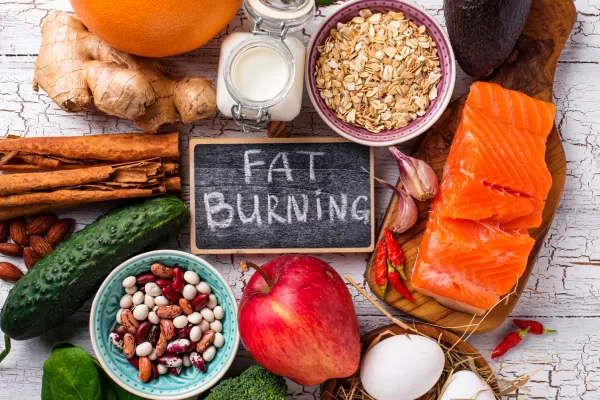Dr. Andrea
Expect Wellness


WELLNESS
Dr. Andrea's
Articles
Growing older can be scary but it doesn’t have to be.
Wouldn’t it be great to embrace your aging and celebrate every single breath you take? As the saying goes – Let’s make the rest of your life – the BEST of your life.

Decoding Cell Functions and Fat Burning for Prime Health
Decoding Cell Functions and Fat Burning for Prime Health
Fully grasping how our bodies work on a microscopic level can give us the keys to top health and fitness. The center of it all? Tiny structures within our cells called mitochondria. Often called the cell's energy factory, these little parts have a big job. They change food into energy our bodies can use while also handling waste. This piece dives into the world of energy production within cells, zooming in on how our bodies burn sugar and fat for fuel.
How Our Cells Burn Fuel
Think of mitochondria as the campfires of our cells, turning raw materials into usable energy with a bit of oxygen. Without oxygen, much like a fire, this process won't work properly. Normally, our bodies primarily break down two substances for energy: sugar and fat.
Fat's Journey to Becoming Energy
Breaking down fats in the body also needs a lot of oxygen. Take palmitic acid, a type of fat, as an example. When it reacts with oxygen, it makes carbon dioxide and water, things our body can get rid of easily. Specifically, take one palmitic acid molecule and 23 oxygen molecules. The result? Sixteen molecules each of carbon dioxide and water. This shows us how important a good oxygen supply is for our bodies to burn fats effectively.
Sugar (Glucose) Burn
Glucose oxidation is simpler when it comes to oxygen demands. One glucose molecule (C6H12O6) needs only 6 oxygen molecules to create 6 carbon dioxide and 6 water molecules. This way, less oxygen is used compared to fat burn. This is why our bodies rely heavily on it, especially during strenuous activities.
Oxygen's Role in Fat Burning
Understanding both the fat and sugar burn processes points out a crucial part of metabolism: oxygen is key for fat burning. This hits home for people who want to increase their ability to burn fat, especially those who are not regular exercisers or may be overweight. For them, their body may not provide enough oxygen for proper fat burn.
Boosting Oxygen through Lifestyle Tweaks
Want to burn more fat? Increase your cells' oxygen supply. How? Simple changes in lifestyle. This means more physical activities and healthier food. Regular exercises don't just improve heart health but also make oxygen use more effective. Over time, these changes will increase fat burning, helping with weight control and improving health.
Post-workout Burn
Post-exercise, the body experiences an "afterburn effect," where it continues to burn calories at an elevated rate. This phenomenon is officially known as Excess Post-exercise Oxygen Consumption (EPOC) and is a testament to the body's increased metabolic rate following physical activity. The afterburn effect underscores the importance of regular exercise not only for immediate energy expenditure but also for its prolonged metabolic benefits.
Conclusion
Understanding the cellular principles behind fat and sugar burning offers a scientific basis for optimizing health and weight management strategies. By focusing on increasing oxygen availability through lifestyle changes and regular physical activity, individuals can enhance their body's fat-burning efficiency. This approach not only supports weight loss goals but also contributes to overall well-being and longevity. Embracing these principles can lead to a healthier, more energetic life, powered by the efficient and effective use of the body's energy sources.
Incorporating these insights into daily life can empower individuals to make informed choices about their health, emphasizing the importance of a balanced diet, regular physical activity, and overall wellness. By understanding the fundamental processes that drive our body's energy production, we can unlock the secrets to optimal health and vitality.





